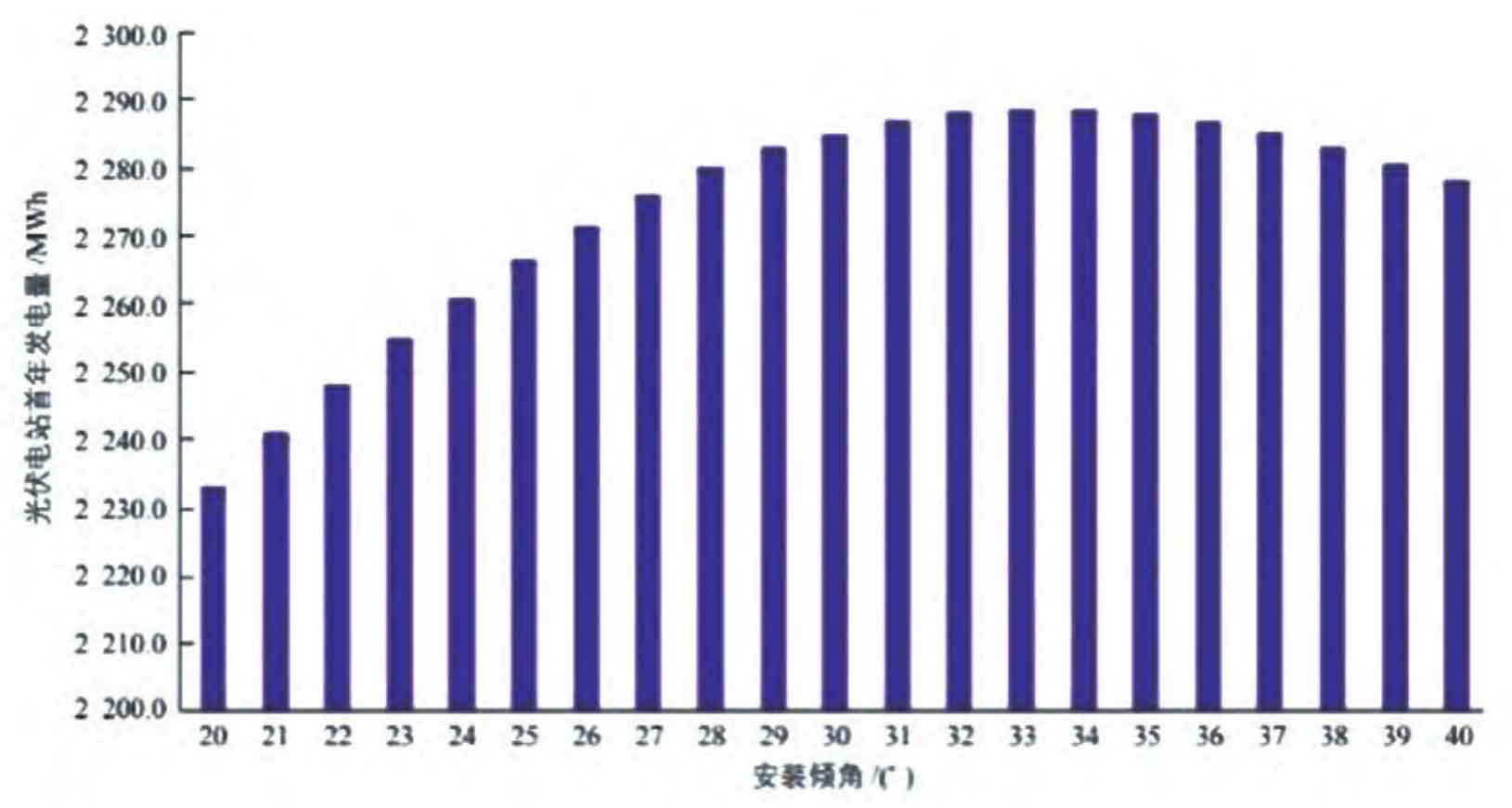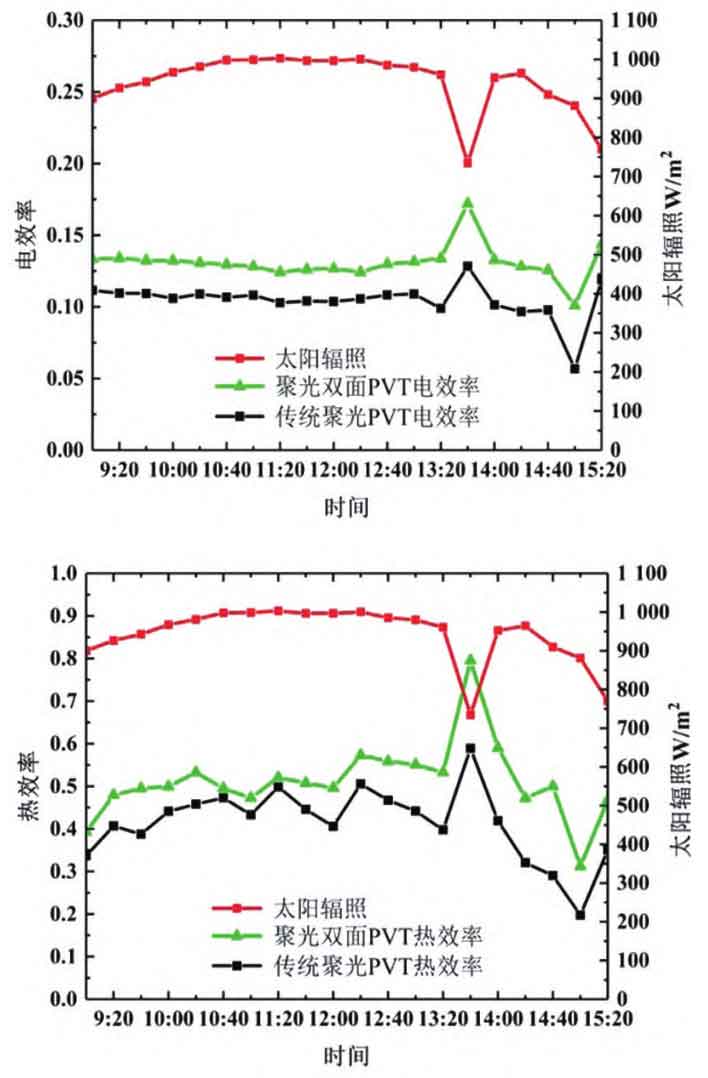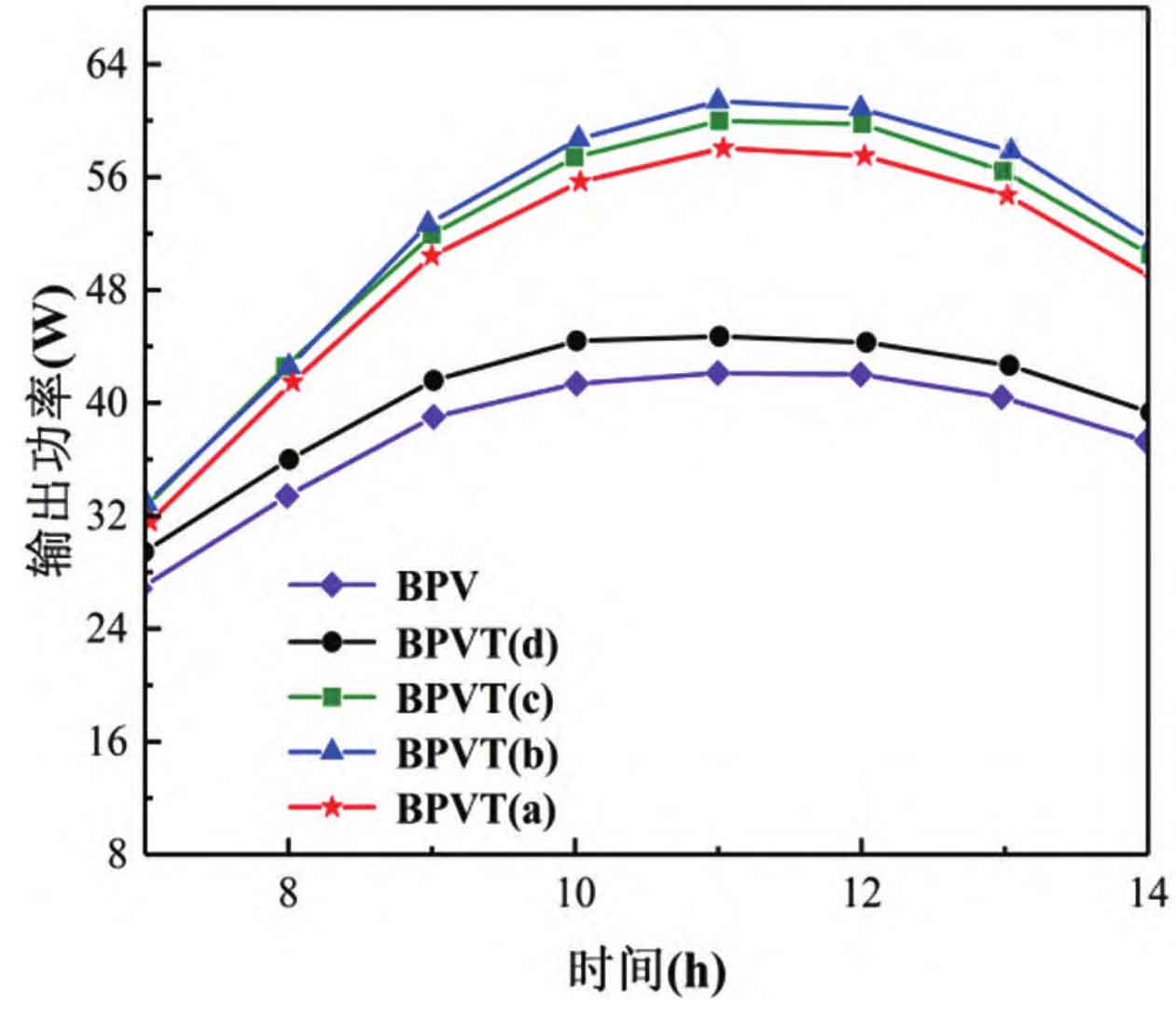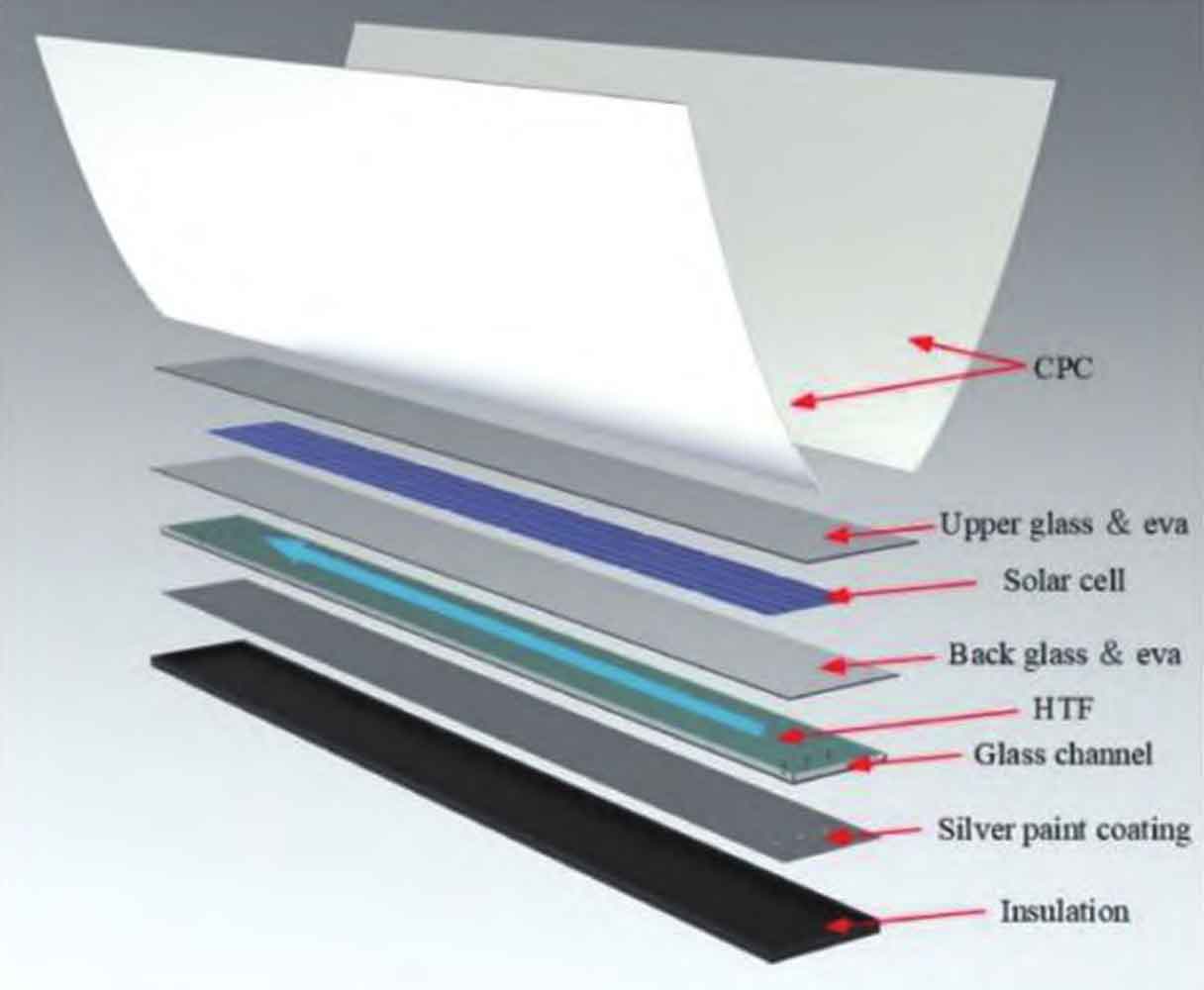Solar energy, as a clean and renewable energy source, has received attention from all sectors of society. After nearly a decade of development, the application of solar energy is mainly concentrated in the fields of photovoltaic and photothermal utilization. With the continuous development of the photovoltaic power generation industry, photovoltaic power stations have gradually expanded from land to water, and new ecological power generation models such as water light complementarity and fish light complementarity have gradually become research focuses. Water photovoltaic systems often use double-sided double glass modules (BPVs). Compared with traditional single-sided photovoltaic (MPV), the back of double-sided photovoltaic (BPV) can receive scattered and reflected light from the environment, achieving more electrical energy output, higher power generation and space utilization. Pei Jun et al. conducted analysis and empirical research on the power generation characteristics of BPV modules in photovoltaic power plants such as water surface and agricultural photovoltaic complementary power plants. The results showed that in aquatic photovoltaic power plants and agricultural photovoltaic complementary power plants, the average annual power generation gains of BPV modules compared to single-sided photovoltaic modules were 5.39% and 11.96%, respectively.
1. Analysis of the impact of installation methods on BPV component power generation
Due to the dual sided power generation characteristics of BPV components, different installation methods can affect the power generation of the power plant. Therefore, Li Yabin et al. studied the power generation of BPV components under different installation methods and different reflective background conditions. The results showed that under ideal conditions of a single component (under a reflective background with an installation height of 0.4 m, an installation angle of 35 °, and a reflectivity greater than 70%), the average power generation gain of BPV components was 21.38%, Up to 32.99%. Wu Shiqin discussed the principles that BPV should follow in design. The study found that BPV components are influenced by various factors such as inclination angle arrangement, geographical location, and site background reflection conditions. The higher the installation height of the components, the more power generation they generate. However, as the installation inclination angle of the components increases, the reflected radiation received by the back of the components decreases, resulting in a decrease in the total power generation of the photovoltaic power plant. Ma Qinghu et al. simulated the proportion of solar radiation received by the back of the BPV photovoltaic power plant and the power generation of the photovoltaic power plant at different installation angles using PVsyst software, as shown in Figure 1. The results showed that the solar radiation received by the back of the BPV module accounted for 6.09% to 6.47% of its front, and the power generation of the photovoltaic power plant was the highest at a module installation angle of 33 °.

Guo Dan et al. analyzed the development advantages of BPV in detail and pointed out that how to ensure that the back can generate electricity while maintaining the front power generation efficiency is currently the challenge faced by double-sided solar cells.
2. Research on the Application of Solar Photovoltaic Photothermal Systems

In addition, the increase in battery operating temperature is an important factor leading to a decrease in electrical efficiency. For crystalline silicon solar cells, the electrical efficiency will decrease by 0.45% for every 1 ℃ increase in temperature. Therefore, it is necessary to cool the solar photovoltaic modules. Since the concept of solar photovoltaic photothermal (PVT) was proposed by Kern and Russell in 1978, scholars at home and abroad have conducted extensive theoretical and experimental research on it. The results show that PVT systems not only reduce battery temperature and improve power generation efficiency, but also obtain thermal energy, achieving the cascade utilization of solar energy. BPV also faces the problem of temperature rise and decrease in photoelectric conversion efficiency. Therefore, Kuo et al. proposed a double-sided solar photovoltaic photothermal system (BPVT), pointing out that electrical and thermal efficiency are important characteristics of the overall performance of BPVT. Research has found that compared to traditional PVT systems, the annual average power generation of BPVT systems has increased by 13.5%, the temperature of water storage tanks has increased by 4.8%, and the power efficiency has increased by 16% to 30%. In addition, different cooling methods also have a significant impact on the performance of the BPVT system. Zhang Yong designed a glass channel BPVT system and studied the thermoelectric performance of the system at a cooling water flow rate of 80 L/h. As shown in Figure 2, the average electrical efficiency of the glass channel BPVT system is 17.13%, and the average thermal efficiency is 47.25%.

Ma et al. proposed four types of cooling devices based on the characteristics of BPV and conducted performance research on the BPVT system through numerical simulation (as shown in Figure 3). The results indicate that compared to traditional BPV systems, the BPVT system with lower surface cooling has the best electrical performance.

3. Analysis and Research on Low Grade Thermal Energy Recovery and Utilization
In order to improve energy efficiency, scholars have conducted relevant research on the thermal utilization of PVT. Due to the low quality of the recovered thermal energy, traditional PVT systems can use it for agricultural drying, building heating, and domestic hot water. Applying PVT technology to water heaters is one of the utilization methods of PVT hot water systems, mainly for independent use in households or public buildings. Dubey and Tiwari designed a solar water heater that combines PVT technology, with PV components providing power to the system. The entire water heater can operate independently and can be applied in remote areas. Applying PVT technology to solar seawater desalination is also a comprehensive utilization technology that integrates solar photovoltaic, photothermal, and seawater desalination technologies. Kumar et al. and Singh et al. combined the PVT system with a solar still, using photovoltaic power generation to drive a DC water pump. The water pump combined the still with a PVT flat plate collector to form a circulating water system. The photothermal part was used to preheat the water in the collector, and the hot water entered the solar still for further heating, obtaining fresh water through distillation. Due to the low energy flow density on the photovoltaic surface and the limited energy obtained by the system, the quality of thermal energy recovered by traditional PVT systems is low, which can only meet the temperature required for domestic water use and is difficult to directly use as a heat source. The composite system combining PVT and heat pump technology can simultaneously achieve multiple functions such as cooling, heating, and heating water. However, adding heat pump equipment not only increases investment costs but also consumes photovoltaic power generation. Therefore, it is necessary to explore a reasonable way of utilizing heat energy.
4. Analysis and research on the thermoelectric performance of the condensing device
The surface of photovoltaic cells generally faces problems such as low light density and low space utilization, which provide new ideas for the development of photovoltaics by combining concentrating devices with photovoltaic modules. The CPVT system, which combines the concentrating device with PVT, can significantly increase power generation while also obtaining more thermal benefits, adding more economic benefits to the power station. The schematic diagram of the spotlight device is shown in Figure 5.

The research results of Cui Wenzhi et al. on CPVT show that the CPVT system using a flat serpentine cooling channel increases the electrical output by 366% and the thermal output by 522% as the condensing ratio increases from 1 to 6. Nahar et al. conducted experiments and numerical simulations on PVTs with flat cooling channels, and studied the performance of CPVT by adding a condensing device. The results showed that the condensing device increased the irradiation intensity of the battery surface and, under the action of the cooling device, the system obtained more electricity and higher quality thermal energy. At the same time, it was found that improving the uniformity of the surface flux distribution of the battery can further improve the performance of the CPVT system. Meng Tian et al. reviewed the current research status of composite parabolic concentrator PVT systems, and it can be seen that the comprehensive performance of CPVT systems has been greatly improved compared to PVT systems. Zhang H et al. applied a focusing device to the BPVT system and experimentally studied the performance of glass channel CBPVT system and aluminum channel CBPVT system at a constant cooling water flow rate. The results showed that the glass channel CBPVT system had the best comprehensive performance, with an average electrical efficiency of 13.1% and an average thermal efficiency of 51.22%. Gao D et al. established a coupling model of light, heat, and electricity for CBPVT photovoltaic modules, and analyzed the thermodynamic performance of CBPVT modules through numerical simulation. The results showed that the performance coupling of CBPVT system modules was good. Adding a condenser to the BPVT system improved the electrical efficiency by 13%, with a total efficiency exceeding 65%.
5. Summary
The review indicates that the main factors limiting the development of BPV include high battery operating temperature, low surface energy flow density, and installation and operation methods. For this reason, scholars have successively proposed BPVT system and CBPVT system, but due to the characteristics of BPV double-sided power generation, traditional cooling devices cannot directly match it. Therefore, it is urgent to develop a modular cooling device with high heat transfer to reduce the working temperature of the battery and improve electrical efficiency. At the same time, the feasibility and practicality of combining concentrating devices with BPVT systems are studied to explore a new direction for the development of the photovoltaic industry. In addition, a reasonable utilization method needs to be proposed for the recycled low-grade thermal energy to achieve efficient energy utilization.
In the future, we will continue to improve and improve the accuracy of experimental and simulation research. We will develop a high-performance photovoltaic photothermal system that integrates light gathering, power generation, and thermal utilization for BPV modules, bringing more economic benefits to photovoltaic power plants and having certain promotion potential.
